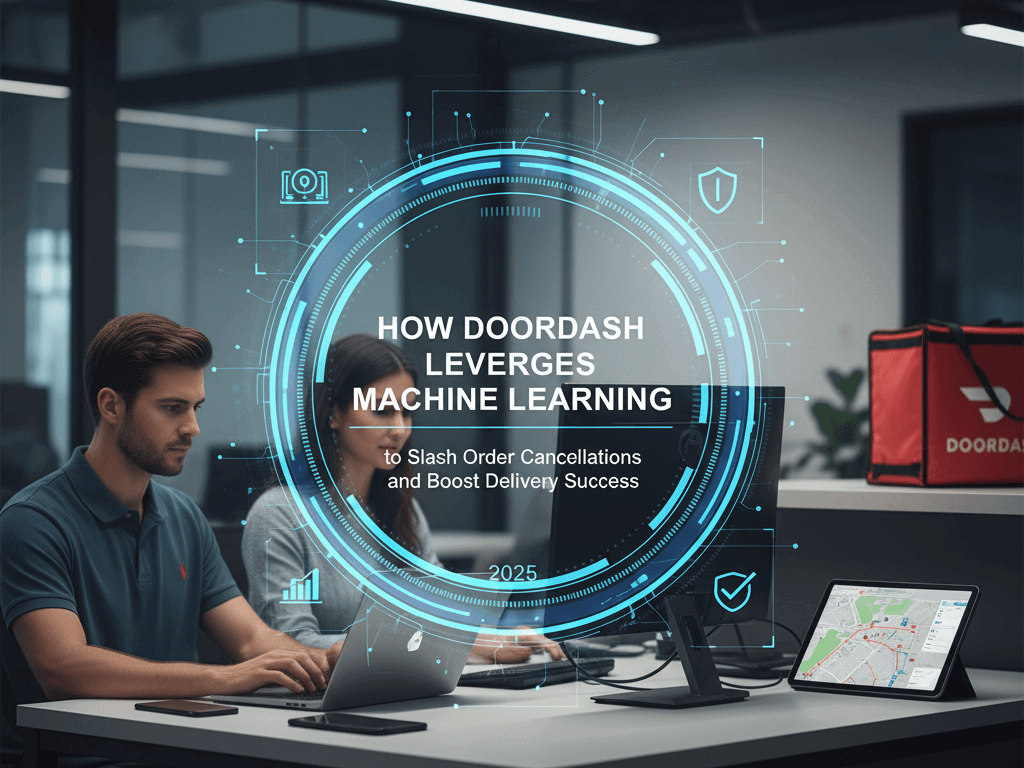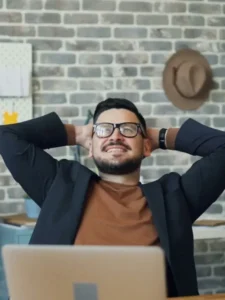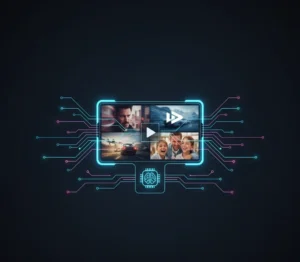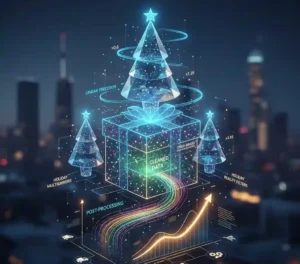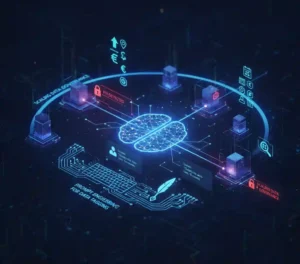Table Of Contents
- Introduction
- The Hidden Costs of Inaccurate Store Status in Food Delivery
- From Heuristics to ML: The Evolution of Order Cancellation Prevention
- Real-World Impact: Saving Deliveries and Building Trust
- Best Practices for Merchants: Minimizing Cancellations from Your End
- Future Horizons: Dynamic ML for Even Smarter Decisions
- FAQs
- Conclusion: Why ML Matters in Your Next Delivery
Introduction
In the fast-paced world of food delivery, nothing stings quite like a canceled order. Picture this: You’ve just placed an order for your favorite sushi, only to get a notification that the restaurant is closed—despite the app showing it open. Frustrating, right? For platforms like DoorDash, these mishaps aren’t just annoyances; they erode trust, cost revenue, and disrupt lives for customers, dashers, and merchants alike. That’s where DoorDash machine learning order cancellation prevention steps in, transforming potential disasters into seamless experiences.
DoorDash, handling tens of millions of deliveries each week, faces the constant challenge of keeping merchant operational status accurate. Staffing shortages, supply chain hiccups, or simple oversights can lead to stores marked open when they’re not. The result? Dashers arrive at dark storefronts, customers wait in vain, and merchants miss out on sales. But by upgrading from basic rules to sophisticated machine learning for delivery optimization, DoorDash has cracked the code on reducing canceled orders with ML, saving thousands of deliveries from the chopping block every week.
Let’s dive into how this works, why it matters, and what it means for everyone involved. We’ll explore the tech behind it, share real-world impacts, and offer practical advice drawn from industry trends.
The Hidden Costs of Inaccurate Store Status in Food Delivery
Imagine a dasher pulling up to a restaurant at 9 PM, order in hand, only to find locked doors and lights off. This scenario plays out thousands of times daily across delivery apps. For DoorDash, inaccurate operational status prediction can trigger a domino effect: frustrated dashers, disappointed customers, and merchants facing paused listings that kill potential revenue.
Statistics paint a stark picture. According to industry reports, food delivery cancellation metrics hover around 5-10% on average, with avoidable ones stemming from operational glitches costing platforms millions annually. A 2022 study by the National Restaurant Association highlighted how supply chain disruptions alone spiked closures by 15%, amplifying the need for smarter systems.restaurantbusinessonline.com
DoorDash’s response? The “Dasher Reports Store Closed” (DRSC) feature. When a dasher encounters a closed store, they snap a photo via the app, get partial compensation, and get unassigned. This kicks off a chain: the order might get canceled, reassigned, or the store paused temporarily. But here’s the catch—some reports are inaccurate. Maybe the photo doesn’t clearly show closure, or the merchant confirms they’re open. Without a filter, this leads to unnecessary cancellations, hurting everyone.help.doordash.com
Enter machine learning. By predicting order failure through a predictive model, DoorDash minimizes these errors, ensuring only valid reports trigger actions. This isn’t just tech jargon; it’s a game-changer for delivery app machine learning, turning reactive fixes into proactive wins.
From Heuristics to ML: The Evolution of Order Cancellation Prevention
Early solutions relied on automated heuristics for order cancellation—simple if-then rules like “if a report comes in, pause the store for an hour.” These worked okay but lacked nuance, often leading to over-cancellations or missed opportunities. DoorDash realized heuristics alone couldn’t handle the scale: thousands of daily reports across millions of deliveries.
That’s why they pivoted to an ML-driven order risk assessment. The core? A LightGBM model that calculates the probability a store is truly closed given a DRSC report. It pulls in data like:
- Historical signals: Recent reports for the store, last successful pickup time, and dasher’s track record on invalid reports.
- Image analysis: An internal image classifier scans the dasher’s photo for signs of closure—like “Closed” signs or dark interiors—compressing it into a probability score.
- Real-time context: Timestamp, store ID, and dasher ID to connect to broader patterns.
This setup outputs a score from 0 to 1. Low scores? Reassign the order to another dasher. Medium? Cancel it. High? Cancel and pause the store. Post-deployment A/B testing showed this reducing canceled orders with ML by thousands weekly, boosting customer satisfaction and merchant revenue.
Think of it as a restaurant ranking algorithm for DoorDash, but flipped—prioritizing reliability over popularity. It’s a prime example of how machine learning for delivery optimization can refine logistics, much like how Uber uses similar tech to predict ride demand.
Real-World Impact: Saving Deliveries and Building Trust
The proof is in the pudding—or in this case, the saved sushi rolls. By integrating this model, DoorDash has enhanced order confirmation optimization, ensuring consumers get accurate updates fast. Merchants avoid unfair pauses, dashers snag more gigs, and the platform runs smoother.
Consider the numbers: With tens of millions of weekly deliveries, even a 1% drop in cancellations translates to massive savings. Industry trends show platforms investing in ML see 20-30% improvements in fulfillment rates, per a McKinsey report on logistics AI. DoorDash’s approach aligns with this, using real-time data in delivery risk prediction to flag issues before they escalate.
A case study from DoorDash’s own logistics: Before ML, heuristics might cancel an order on a single dubious report. Now, if the model detects a low closure probability—say, because the store fulfilled orders minutes earlier—it reassigns, completing the delivery 80% of the time in tests. This not only cuts food delivery cancellation metrics but also fosters loyalty. Happy customers reorder; reliable merchants thrive.
Best Practices for Merchants: Minimizing Cancellations from Your End
While DoorDash handles the heavy lifting with tech, merchants play a crucial role. Here are actionable tips to reduce DoorDash cancellations using ML-inspired strategies:
- Update Operational Status Religiously: Use the merchant portal to reflect real-time hours. Inaccurate listings spike cancellation rates by up to 25%, per delivery app data.
- Optimize Your Menu: Keep listings current—out-of-stock items lead to failures. Aim for optimizing restaurant menu for lower cancellation rates by highlighting staples and using photos.
- Train Staff on Quick Confirmations: Frequent order confirmation linked to fewer failures. Respond to pings within minutes to avoid miscommunications.
- Leverage Data Insights: DoorDash shares performance metrics; track your cancellation rates and adjust. For instance, if evenings show spikes, staff up accordingly.
- Implement Automated Tools: Consider ML-based order management strategies for food delivery apps, like integrating APIs for real-time inventory sync.
These steps aren’t just theory. A small chain in Seattle reported a 40% drop in cancellations after syncing hours dynamically, mirroring DoorDash’s operational status prediction tactics.
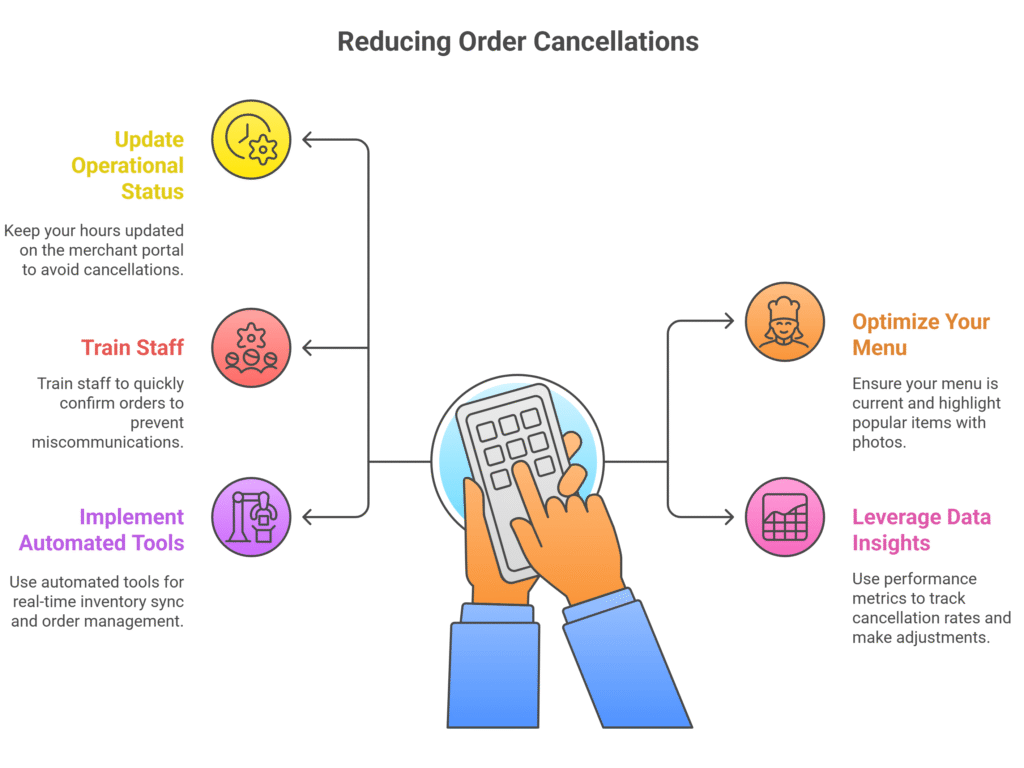
Future Horizons: Dynamic ML for Even Smarter Decisions
DoorDash isn’t stopping here. The next frontier? A dynamic loss function that adjusts thresholds based on time, expected volume, and potential costs. For example, during peak dinner hours, the model might tolerate slightly higher risk to avoid pausing a high-volume store unnecessarily.
This evolution mirrors broader trends: By 2025, Gartner predicts 75% of logistics firms will use AI for optimization. For DoorDash, it means even fewer cancellations, more efficient operations, and happier stakeholders.arxiv.org
What is the DoorDash machine learning model for order cancellation?
It’s a LightGBM-based system that predicts store closure probability using historical data, dasher reports, and image classification to decide on order actions like cancellation or reassignment.
What causes avoidable cancellations on DoorDash?
Common culprits include outdated store hours, staffing shortages, supply chain issues, and inaccurate reports from dashers, all of which ML helps mitigate.
What heuristics are used for predicting order failures?
Initially, simple rules like time-based pauses, but now upgraded to ML for nuanced predictions.
How does DoorDash use machine learning to reduce canceled orders?
By analyzing DRSC reports with features like image probs and history to output closure likelihood, enabling smarter decisions.
How to optimize restaurant operations for fewer cancellations?
Focus on real-time updates, staff training, and inventory management—tools like automated alerts can help.
Can predictive models help save orders from being canceled?
Absolutely—DoorDash’s model saves thousands weekly by reassigning viable orders.
Should food delivery platforms rely on ML for customer experience?
Yes, as it scales better than manual checks, improving reliability and satisfaction.
Are cancellation rates affected by inaccurate menu listings?
Yes, outdated items lead to on-site rejections, inflating rates.
FAQs
Conclusion:
Why ML Matters in Your Next Delivery
DoorDash machine learning order cancellation isn’t just a backend tweak—it’s the secret sauce keeping your food hot and on time. By blending predictive models for order failure with real-world data, they’ve turned a pain point into a strength. Whether you’re a customer craving reliability, a dasher seeking steady gigs, or a merchant chasing growth, this tech touches us all.
Next time you order, remember the ML working behind the scenes. And if you’re in the industry, consider auditing your own systems—could a heuristic upgrade be your next big win? Share your thoughts in the comments; I’d love to hear how cancellations have impacted you.Visit: CareerSwami

